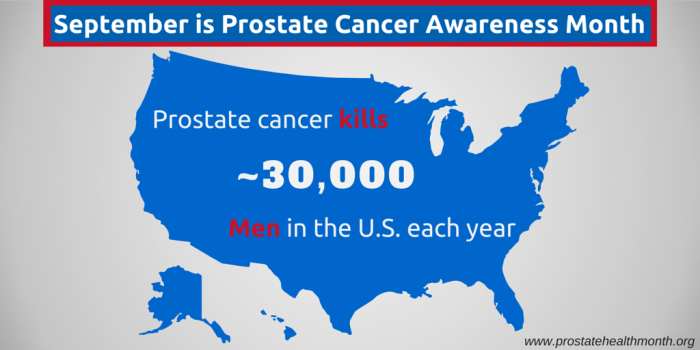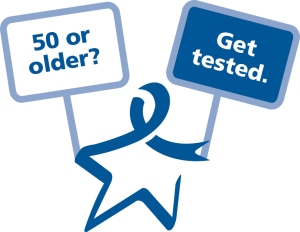 Did you know that, according to the Centers for Disease Control and Prevention, prostate cancer is the most common non-skin cancer and the second leading cause of cancer death among American men?
Did you know that, according to the Centers for Disease Control and Prevention, prostate cancer is the most common non-skin cancer and the second leading cause of cancer death among American men?
In 2013 (the most recent year numbers are available):
- 176,450 men in the U.S. were diagnosed with prostate cancer.*
- 27,681 men in the U.S. died from prostate cancer.*
*Incidence counts cover about 99% of the U.S. population; death counts cover about 100% of the U.S. population. Use caution when comparing incidence and death counts.
September is Prostate Cancer Awareness Month and we would like to take this opportunity to encourage you to care for yourself and your loved ones, by reminding you of the importance of preventive care.

Controlling Risk
Disease prevention begins with a variety of factors including understanding the risks—the ones we can control and the ones we can’t. According to the American Cancer Society, risk factors for prostate cancer include:
Age
The chance of having prostate cancer rises rapidly after age 50. Nearly two out of three prostate cancers are found in men over the age of 65.
Race/ethnicity
Prostate cancer occurs more often in African-American men than in men of other races. African-American men are also more likely to be diagnosed at an advanced stage and are more than twice as likely to die of prostate cancer as white men. Prostate cancer occurs less often in Asian-American and Hispanic/Latino men than in non-Hispanic whites. The reasons for these racial and ethnic differences are not clear.
Family history
Prostate cancer seems to run in some families, which suggests that there may be an inherited or genetic factor. Having a father or brother has been diagnosed more than doubles a man’s risk of developing this disease.
Diet
Men who eat a lot of red meat or high-fat dairy products appear to have a slightly higher chance of getting prostate cancer. These men also tend to eat fewer fruits and vegetables. Doctors are not sure which of these factors is responsible for raising the risk.
Obesity
Most studies have not found that being obese is linked with a higher risk of getting prostate cancer. Some studies have found that obese men have a lower risk of getting a less dangerous form of the disease, but a higher risk of getting more aggressive one. The reasons for this are not clear.
 Maintain a Healthy Outlook
Maintain a Healthy Outlook
While knowing the physical risk factors is key in helping prevent any disease, so is maintaining a healthy spirit. For example:
- Remaining optimistic. Research shows that happiness and a positive attitude are associated with lower rates of disease. Focus on your thoughts—stop negative ones and replace them with positive ones.
- Controlling stress. Stress relievers like deep breathing and muscle relaxation exercises and keeping a journal, can be helpful in controlling the impact stress has on your body.
- Doing everything in moderation. Don’t try to do too much at one time—make sure to have time for proper nutrition, sleep, work and play.
- Creating a network. Maintaining a close circle of family and friends can provide you with support when you need it.
Lastly, getting annual screening tests is vital to sustaining your health and helping prevent diseases. Having a primary care physician (PCP) who can coordinate your care is vital to your good health. If you don’t have a PCP, just visit your insurance carrier’s website, look for the “find a doctor” area and follow the instructions.
To find a Mercy Health System physician, visit www.mercyhealth.org/find-a-doctor.
Source: Centers for Disease Control and Prevention